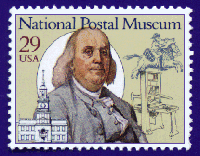
| The choice of which type of electricity is called "positive" and which
"negative" was made around 1750 by Ben Franklin, early American scientist and man of many talents. Franklin studied static electricity, produced by rubbing glass, amber, sulfur etc. with fur or dry cloth. Among his many discoveries was proof that lightning was a discharge of electricity, by the foolhardy experiment of flying a kite in a thunderstorm. The kite string produced large sparks but luckily no lightning, which could have killed Franklin.
|

 Official GSFC Home Page
Official GSFC Home Page  NASA WWW Home Page
NASA WWW Home Page